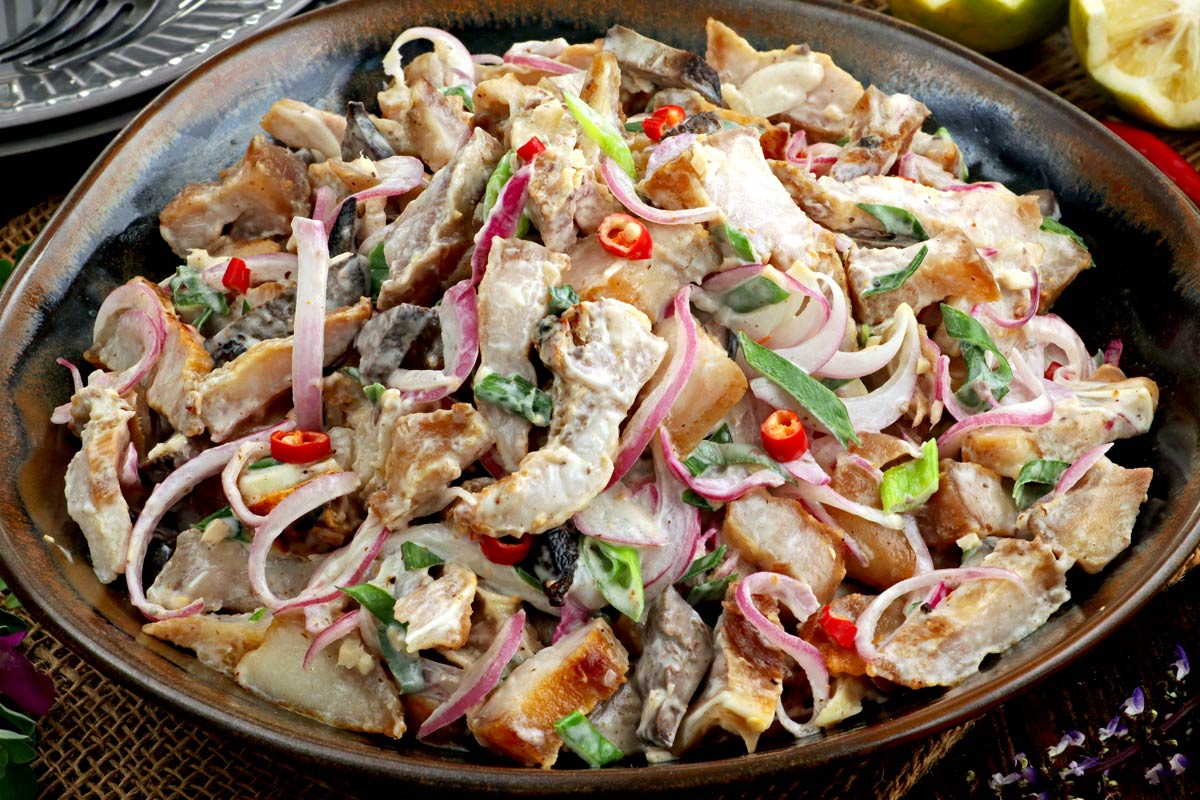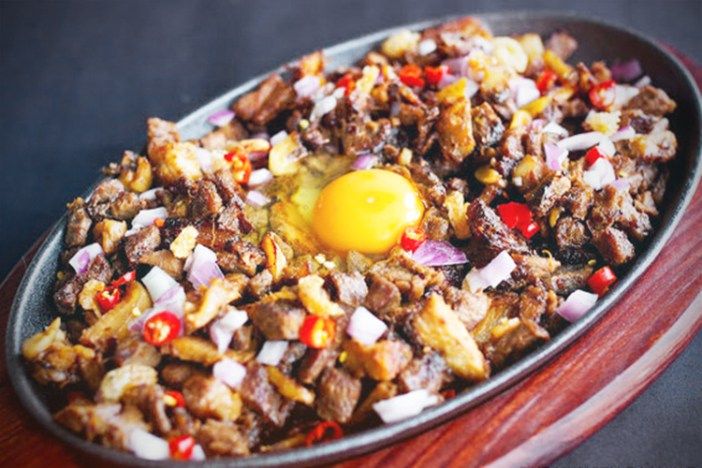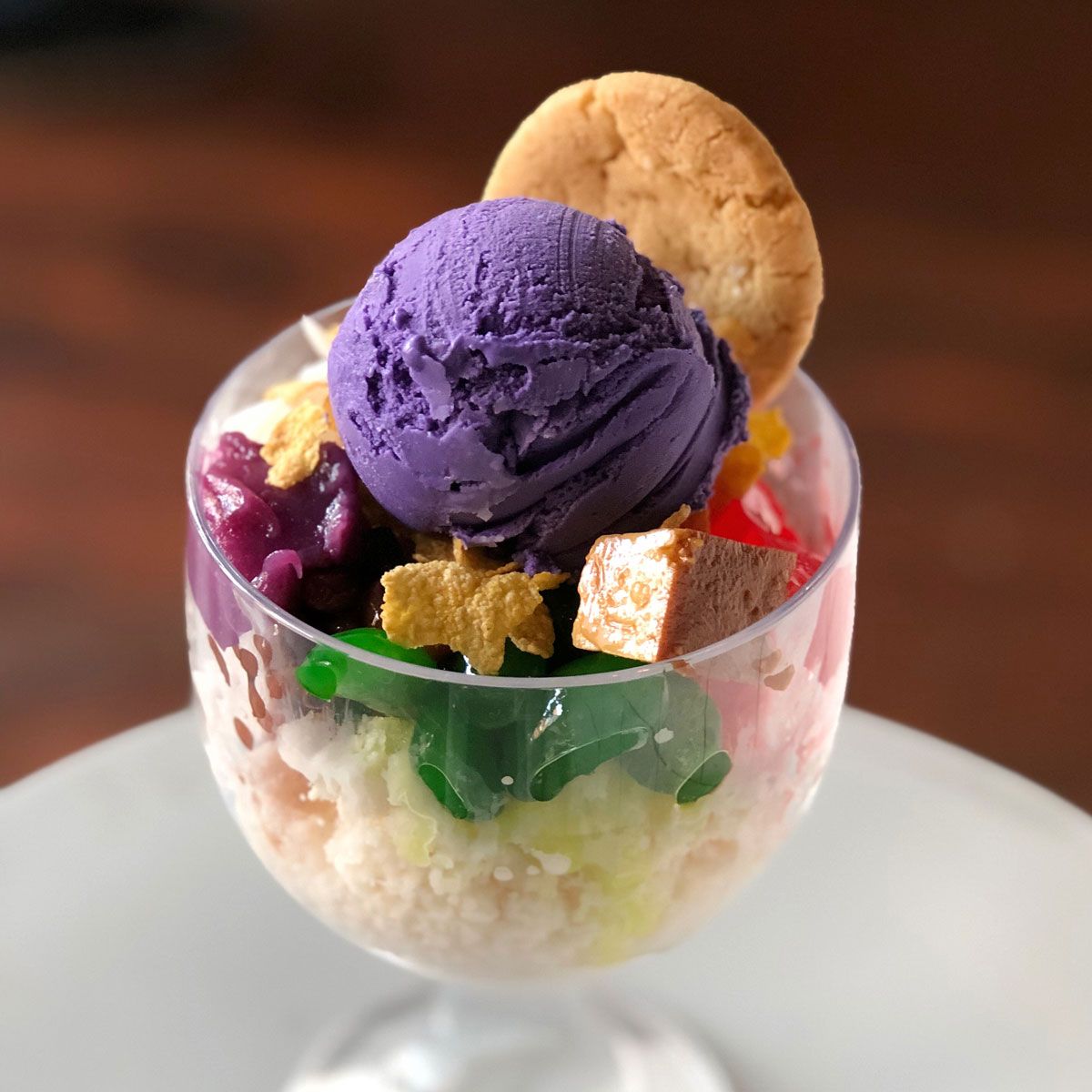【講師コラム】アダム講師No.17~A Flavorful Exploration~
Englishbuds 管理人 MommyKayo です。
今日は9月最後の金曜日です!
10月からEnglishbudsでは
Jollyを始め多くの後期グループレッスンがスタートします♪
滞りなくスタートできるよう
現在最終チェック中ですが
そんな事務作業の手を休めて
アダムのフィリピンの美味しい物の話に
耳を傾けたいと思います!
皆さまの是非一緒にどうぞ💓
A Flavorful Exploration
Filipino food could be a dynamic embroidered artwork of flavors, affected by a wealthy history of exchange, colonization, and innate fixings. Among the horde of delightful dishes that speak to the Philippines, a suggestion that guarantees a delightful gastronomic encounter incorporates Adobo with rice, Dinakdakan, and Sisig for those looking for spiciness, with Halo-halo as a sweet and reviving dessert. This combination of dishes exhibits the interesting mix of flavors, social differences, and inventiveness that characterizes Filipino nourishment.
The Heart of the Meal: Adobo with Rice
Adobo is arguably the most iconic Filipino dish, beloved by locals and foreigners alike. Typically, Adobo consists of marinated meat (often chicken or pork) simmered in a blend of soy sauce, vinegar, garlic, bay leaves, and black peppercorns. The dish is a harmonious medley of salty, sour, and savory flavors, which pairs perfectly with a steaming mound of fluffy rice.
Spice It Up: Dinakdakan and Sisig
For those who crave a spicy kick, Dinakdakan and Sisig are sure to tantalize your taste buds. Dinakdakan is a popular Ilocano dish made from grilled pig’s ears, snout, and tongue, mixed with onions, chili peppers, and a tangy calamansi (Filipino lime) dressing. The result is a fiery yet flavorful delicacy that showcases the love of bold, spicy flavors in Filipino cuisine.
Sisig, on the other hand, is a sizzling sensation originating from Pampanga, often considered the “Sisig Capital” of the Philippines. It’s traditionally made from chopped pig’s face and ears, seasoned with chili peppers, onions, and calamansi, then grilled to perfection. The dish is served on a sizzling hotplate, creating an enticing aroma and sound. Sisig’s spicy, savory, and slightly tangy profile makes it a favorite among those who crave heat.

A Sweet Ending: Halo-halo
No Filipino meal is complete without dessert, and Halo-halo is the perfect way to round off this culinary journey. The name “Halo-halo” literally means “mix-mix,” and that’s precisely what you’ll do when you savor this dessert. It’s a delightful mishmash of ingredients, including crushed ice, sweetened fruits like jackfruit, banana, and sweet potato, jellies, beans, leche flan (caramel custard), and a scoop of ube (purple yam) ice cream. The beauty of Halo-halo lies in its customizable nature – you can mix and match the ingredients to create a dessert that suits your sweet tooth. 
Filipino cuisine is a testament to the country’s rich cultural heritage and its ability to adapt and evolve over time. So, the next time you’re seeking an adventure for your taste buds, consider this Filipino food recommendation, and you won’t be disappointed.
フィリピン料理はごはんに合う味付けなんですよね~。
アダムがチョイスしてくれたフィリピン料理は
全部ご飯にピッタリ!!!
Dinakdakan、初耳ですが美味しそうですね♪
でも豚の鼻が入ってるってまったく想像ができない(^^;
今度フィリピンを訪れるチャンスがあったら
是非挑戦してみたいです!!!
来週の担当はマデルです!
どうぞお楽しみに✨
にほんブログ村


